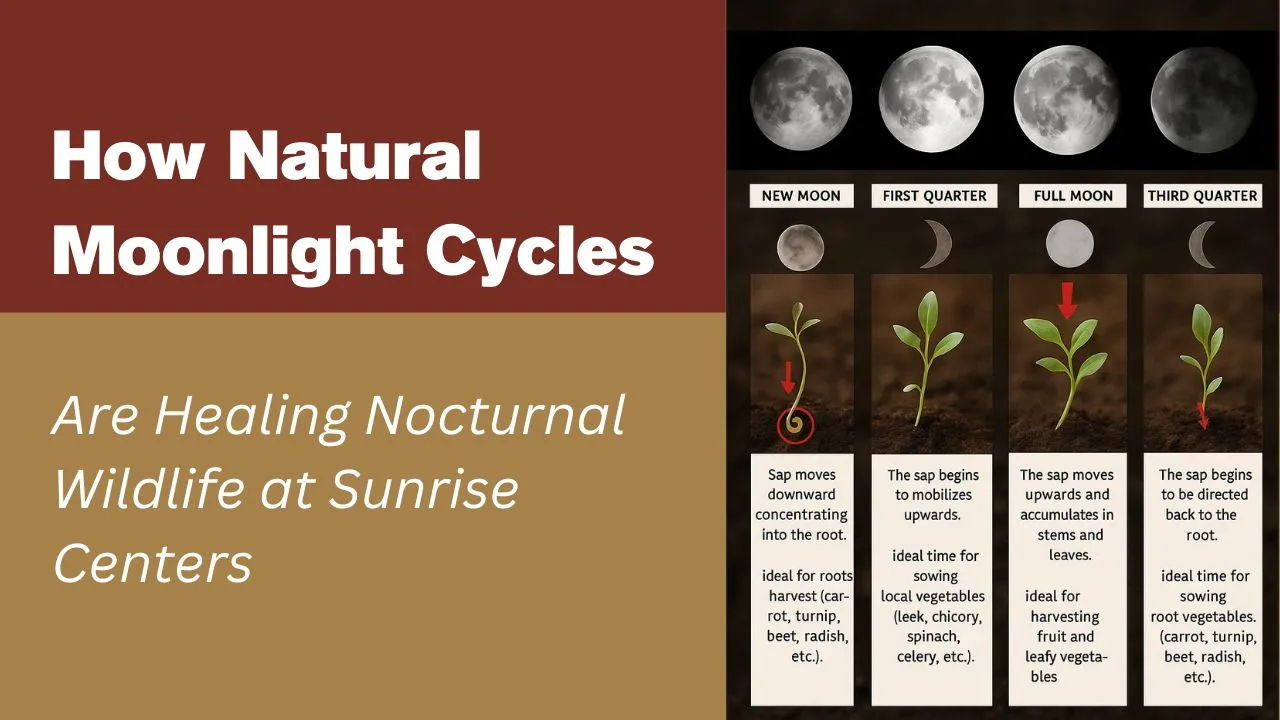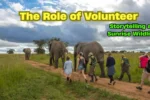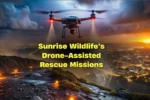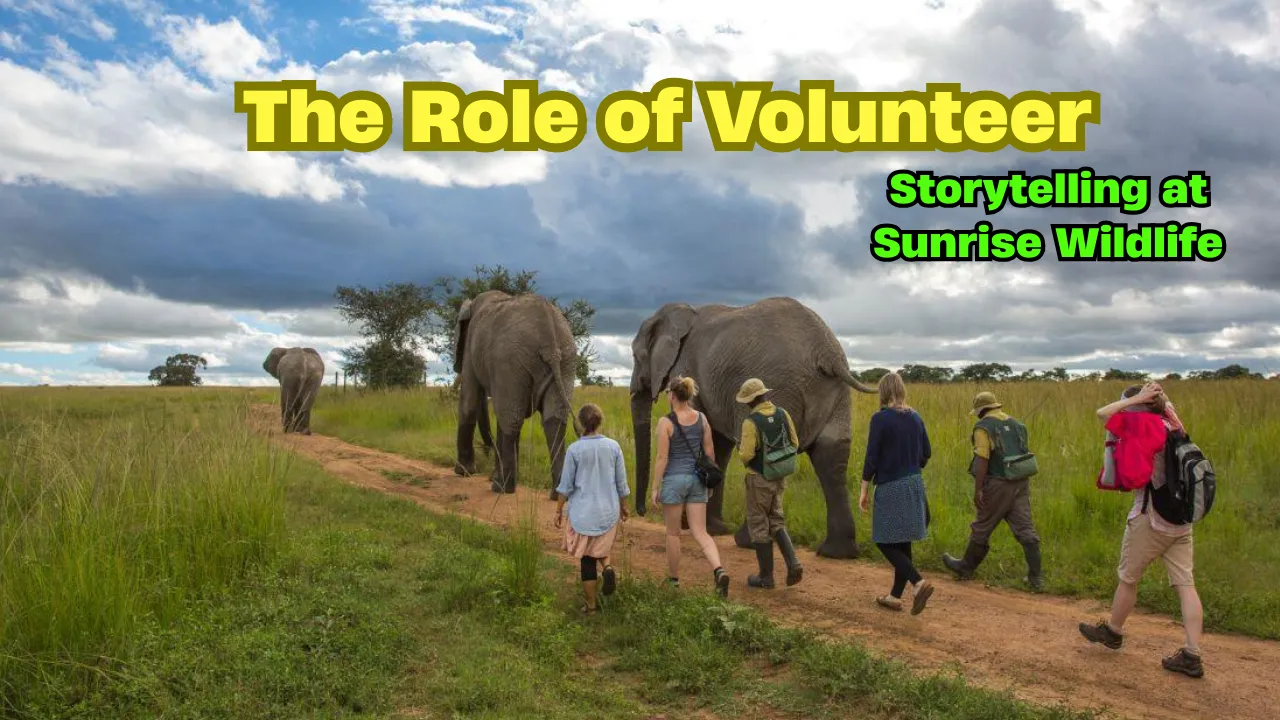Natural moonlight cycles: Natural moonlight cycles are a powerful yet often overlooked force in the world of nocturnal wildlife. From guiding migration paths to influencing feeding patterns, the phases of the moon silently shape the survival instincts of creatures that thrive in the dark. Wildlife rehabilitation efforts, especially for nighttime-active animals, have started to embrace the value of moonlight not just as a natural phenomenon, but as a recovery tool.
Sunrise Wildlife stands at the forefront of this evolving practice, integrating lunar rhythms into its care approach for nocturnal species. This article breaks down how the center replicates moonlight exposure to align with wild behaviors, enhances rehabilitation through natural lighting, and prepares animals for life back in their native habitats. You’ll also learn why this strategy matters in long-term conservation and species resilience.
How Sunrise Wildlife Uses Natural Moonlight Cycles to Support Nocturnal Animal Recovery
At the heart of Sunrise Wildlife’s innovative care model is the strategic use of natural moonlight cycles to assist in the nocturnal animal recovery process. These cycles impact more than just nighttime visibility — they influence biological rhythms, stress levels, and even predator-prey dynamics. By mimicking real-world moonlight conditions within their enclosures, Sunrise Wildlife helps injured or orphaned animals maintain natural behaviors, aiding both mental and physical recovery. This method not only improves post-release survival but also ensures animals retain vital instincts needed in the wild. With attention to lunar phases and minimal artificial lighting interference, the center blends modern rehabilitation techniques with time-tested patterns of nature.
Overview Table of Key Concepts
| Aspect | Description |
| Focus | Use of natural moonlight cycles for nocturnal animal recovery |
| Technique | Simulated moon phases using lighting systems |
| Benefits | Lower stress, maintained instincts, smoother release |
| Target Animals | Bats, owls, flying squirrels, raccoons, and more |
| Challenges | Individual variation in response, light pollution control |
The Role of Natural Moonlight in Animal Behavior
Natural moonlight cycles are closely tied to animal instincts. For nocturnal wildlife, the brightness or darkness of a night directly affects their sense of safety, timing for activity, and ability to navigate. A full moon might deter some species from hunting to avoid predators, while others use the light to forage more efficiently. At Sunrise Wildlife, understanding these natural behaviors is key to designing effective rehabilitation plans.
When animals are placed in artificial environments, the absence of natural lunar rhythm can disrupt their internal clocks, known as circadian and circalunar rhythms. This can affect hormone release, feeding routines, and even emotional balance. By recreating lunar lighting within care facilities, Sunrise Wildlife allows nocturnal animals to stay in tune with the same cycles they’ll face upon release — enhancing both behavioral readiness and long-term adaptation.
How Sunrise Wildlife Replicates Moon Phases
To integrate natural moonlight cycles into daily care, Sunrise Wildlife employs specialized lighting systems that adjust to mimic the actual lunar calendar. These systems gradually increase or reduce brightness in synchronization with moon phases. This gives animals a controlled yet authentic experience of waxing and waning light, a crucial part of re-establishing natural rhythms during their stay.
Animal enclosures are shielded from external light pollution, another disruptor of nocturnal habits. Within these environments, staff monitor animal responses closely and tailor routines such as feeding or movement opportunities based on individual activity patterns. The use of this technique doesn’t just simulate moonlight — it restores a lost connection to nature, even in captivity.
Benefits of Moonlight-Based Rehabilitation
The inclusion of natural moonlight cycles in wildlife rehabilitation brings transformative benefits:
- Restoration of biological rhythms: Animals maintain internal timing for hunting, sleeping, and mating.
- Reduced stress levels: Familiar conditions lead to lower anxiety and more stable behavior during treatment.
- Improved post-release success: Animals released into the wild are better equipped to survive without needing further human intervention.
- Minimized human interference: Lunar-based care reduces reliance on fixed lighting schedules and promotes independence.
By aligning animal recovery with the natural world, Sunrise Wildlife is creating a bridge between healing and habitat.
Key Practices at Sunrise Wildlife
Two vital applications of natural moonlight cycles at Sunrise Wildlife include:
- Lunar-Synced Enclosures: Housing units are designed with programmable lights that follow real lunar data. This replicates conditions animals would experience in the wild, allowing their habits to continue uninterrupted.
- Moonlight Monitoring Program: A dedicated system tracks animal behavior relative to the current lunar phase. Feeding schedules, medication, and observation routines are adjusted accordingly, providing a custom recovery approach for each animal.
These practices form the backbone of an environment that puts nature first, even in a controlled setting.
Challenges and Considerations
Adopting natural moonlight cycles into rehabilitation is not without complications. Animals may respond differently to the same lighting schedule depending on age, species, and previous exposure to urban lighting. For example, a rescued raccoon from a city may be less sensitive to moonlight shifts than one from a forest.
Moreover, building a precise moonlight simulation system requires technical investment and expertise. Staff at Sunrise Wildlife are trained not just in care but in managing light-based rehabilitation tools, minimizing artificial disruptions while maximizing environmental authenticity.
Still, these hurdles are minor compared to the gains — especially when rehabilitation success leads to permanent releases.
Success Stories from Sunrise Wildlife
A standout case involves a group of juvenile flying squirrels rescued after habitat destruction. Initially disoriented and highly stressed, the squirrels were introduced to a moonlight-based recovery chamber. Over time, they regained their nocturnal habits, including gliding at night and foraging according to the lunar cycle. After two months, all individuals were successfully released and monitored in the wild, showing high survival and integration rates.
Another story features a young barn owl injured by a vehicle. Staff used dim moon-phase lighting to encourage hunting behaviors, gradually reducing human contact. Within weeks, the owl adapted to pre-dawn hunting routines and showed marked improvement in physical and behavioral health.
These stories highlight the strength of recovery environments that work with nature, not against it.
The Science Behind Moonlight and Wildlife
Scientific studies show that natural moonlight cycles affect animal behavior through light-sensitive hormones like melatonin. These hormones control sleep, energy, and even aggression. When animals are deprived of natural lunar light, these rhythms can become unstable, leading to restlessness or disorientation.
Sunrise Wildlife collaborates with wildlife biologists to fine-tune their recovery environments. Insights from ongoing research feed into rehabilitation protocols, creating a loop where science directly shapes care, and real-world outcomes inform further scientific understanding.
Why It Matters for Conservation
Incorporating natural moonlight cycles into wildlife care is more than a treatment method — it’s a philosophy rooted in respecting animal instincts. As human expansion and light pollution disrupt natural habitats, rehabilitation centers like Sunrise Wildlife offer a rare safe space where nature’s rhythms are preserved.
This method doesn’t just help individual animals recover. It reinforces ecosystems by ensuring that released species return with their natural behaviors intact, capable of playing their roles in the wild. For conservationists and researchers, it’s a sign that even subtle factors like moonlight can have a big impact when approached with care and purpose.
FAQs
Q1: What are natural moonlight cycles?
They refer to the changing light patterns during the moon’s monthly phases, which influence the behavior of nocturnal animals.
Q2: How do these cycles help in nocturnal animal recovery?
They allow animals to retain their instinctual habits and rhythms, reducing stress and improving their survival chances post-release.
Q3: What animals benefit most from this technique?
Species like bats, owls, flying squirrels, and raccoons respond well to lunar-based recovery methods.
Q4: Can artificial lights disrupt animal recovery?
Yes, exposure to inconsistent or artificial lighting can confuse natural instincts and delay rehabilitation progress.
Q5: Is moonlight-based care used globally?
While still emerging, many leading wildlife centers are adopting similar methods inspired by Sunrise Wildlife’s success.
Final Thought
As we strive to protect and rehabilitate the world’s nocturnal creatures, understanding and honoring their connection to natural moonlight cycles becomes more than just thoughtful — it becomes essential. Sunrise Wildlife’s groundbreaking approach reveals how even something as subtle as moonlight can play a vital role in restoring life to those who depend on the night. By blending scientific precision with natural harmony, they’re not just healing animals — they’re preserving wild instincts that the world cannot afford to lose.
If this perspective moved you, explore more about nocturnal wildlife or share this with someone who cares about nature. The night sky holds secrets we’re just beginning to understand — and with centers like Sunrise Wildlife, we’re learning how to listen.












